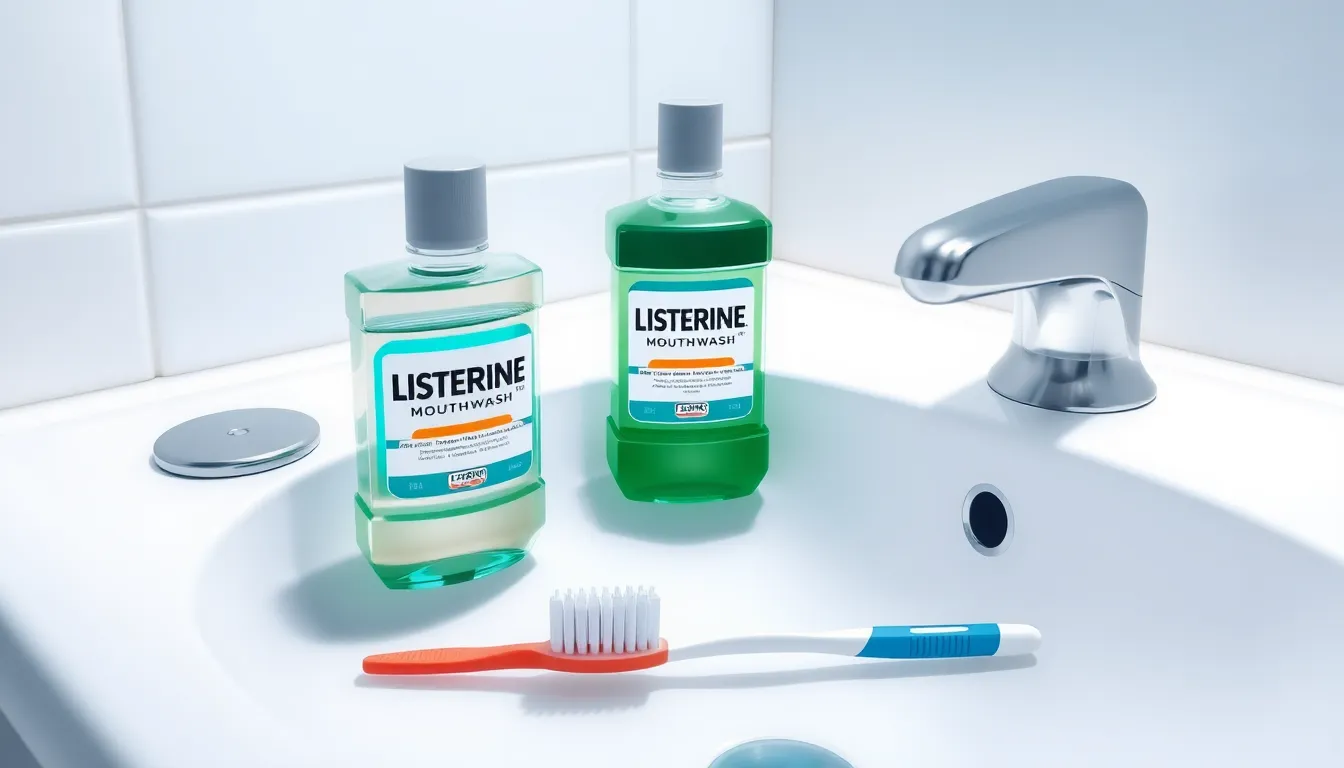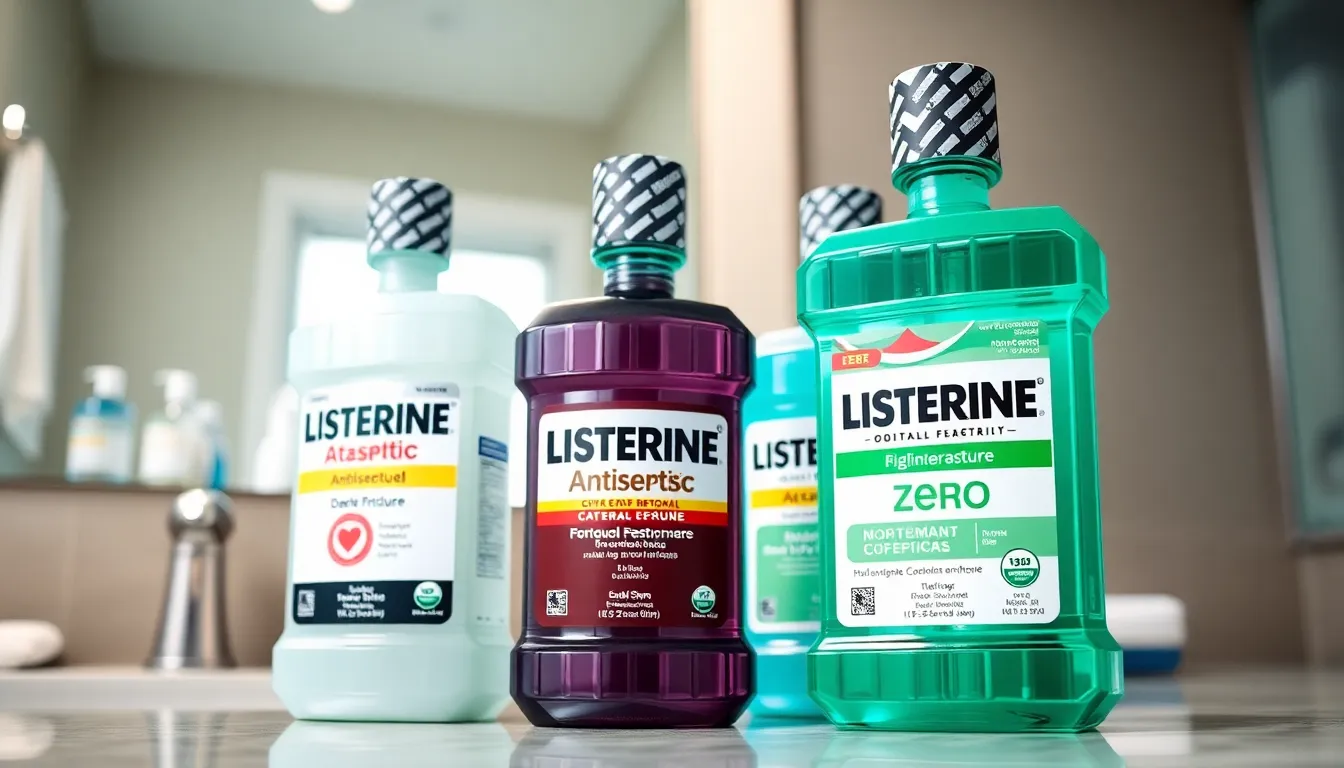When it comes to battling tooth infections, many people find themselves reaching for the nearest bottle of Listerine, hoping for a miracle. After all, who wouldn’t want to swap out a dentist visit for a quick swish of mouthwash? But does this minty-fresh liquid actually pack a punch against pesky bacteria, or is it just a glorified mouth refresher?
In a world where DIY dental solutions reign supreme, understanding the true power of Listerine can save both time and money. While it may leave your breath smelling like a peppermint factory, the real question remains: can it truly tackle an infection? Buckle up as we dive into the science behind Listerine and its potential role in oral health—because who wouldn’t want to turn their bathroom into a mini dental clinic?
Table of Contents
ToggleOverview of Tooth Infections
Tooth infections, also known as dental abscesses, occur when bacteria invade the dental pulp. A painful cavity or a fracture often allows bacteria to penetrate deeper layers of the tooth. Symptoms typically include severe toothache, swelling in the gums, and sensitivity to hot or cold temperatures.
Bacteria thrive in warm, moist environments, making the oral cavity an ideal location for infection. The immune system reacts to bacterial invasion, resulting in pus accumulation at the infection site. In severe cases, tooth infections can lead to systemic issues, such as spreading bacteria to other body parts.
Diagnosis of tooth infections involves dental examinations and imaging techniques. Treatments often include antibiotics, drainage of pus, or root canal therapy to remove infected tissue. If left untreated, complications may arise, potentially leading to tooth loss or further health issues.
Preventive measures play a vital role in maintaining oral health, reducing the risk of tooth infections. Regular brushing and flossing help remove plaque, an essential step in preventing cavities and subsequent infections. Visiting a dental professional for routine check-ups also contributes to early detection of potential problems.
Listerine, a popular mouthwash, may inhibit bacteria growth, but using it as a remedy for tooth infections lacks scientific support. While mouthwash might provide temporary relief by reducing bacteria, it cannot replace professional treatment for established infections. Understanding the nature of tooth infections and their treatment options remains crucial in managing oral health effectively.
Understanding Listerine

Listerine is a widely used mouthwash known for its potential antiseptic properties and breath freshening abilities. Evaluating Listerine’s ingredients and product types provides insight into its capabilities for oral health.
Ingredients and Their Effects
Listerine contains several active ingredients, including eucalyptol, menthol, thymol, and methyl salicylate. Eucalyptol acts as an antibacterial agent, helping reduce dental plaque. Menthol provides a cooling sensation and contributes to fresh breath. Thymol offers antifungal characteristics, potentially inhibiting certain bacteria in the mouth. Methyl salicylate serves as a pain reliever, which may ease some discomfort. Together, these components contribute to Listerine’s effectiveness in promoting oral hygiene, though they do not effectively treat established tooth infections.
Types of Listerine Products
Various Listerine products cater to different oral health needs. Original Listerine features a strong antiseptic formula designed to combat plaque and gingivitis. Listerine Zero offers a less intense flavor while maintaining similar antibacterial properties. Listerine Advanced White focuses on whitening teeth and reducing stains. Some formulations target specific issues, such as sensitivity or freshening breath longer. Each type serves different objectives, emphasizing the importance of selecting a product that aligns with individual oral health goals.
Will Listerine Kill Tooth Infection?
Listerine may not effectively kill tooth infections. Many people wonder about its antibacterial properties and their relevance to dental infections.
Scientific Studies and Evidence
Research indicates Listerine can reduce bacteria in the mouth, with specific studies showing a decrease in plaque and gingivitis. An article in the Journal of Clinical Periodontology found that Listerine could significantly lower bacterial count compared to untreated controls. While these results support its use as a mouthwash, no rigorous studies confirm Listerine’s effectiveness in treating established tooth infections. Its active ingredients might help maintain oral hygiene but cannot replace professional dental care. Ultimately, a lack of scientific evidence prevents Listerine from being considered a treatment for dental abscesses.
Anecdotal Evidence from Users
User experiences with Listerine vary widely. Some individuals report temporary relief from symptoms like bad breath and unpleasant taste. These personal accounts often speak to Listerine’s refreshing qualities rather than its ability to address dental infections. Many users acknowledge the need for professional treatment when dealing with severe tooth pain. Alongside these experiences, it’s clear that while Listerine might offer superficial benefits, it doesn’t provide a cure for tooth infections. Observations suggest they see it as a supportive measure rather than a standalone solution.
Alternative Remedies for Tooth Infections
Tooth infections may benefit from alternative remedies alongside professional treatment. Exploring various approaches offers options for those seeking relief.
Home Remedies
Clove oil serves as a popular choice due to its natural analgesic properties. Applying a few drops to the affected area can provide temporary relief from pain. Saltwater rinses also help promote healing by reducing inflammation and flushing out bacteria. Combining salt with warm water creates a soothing solution for rinsing the mouth. Additionally, garlic possesses antibacterial qualities that may aid in fighting infection. Crushing a clove and placing it directly on the sore spot may yield benefits. Turmeric paste offers another option, leveraging its anti-inflammatory effects. Mixing turmeric with water to create a paste and applying it to the gums can help alleviate discomfort.
Over-the-Counter Solutions
Many over-the-counter products target tooth infections. Antiseptic mouthwashes containing ingredients like chlorhexidine can reduce bacteria in the mouth, promoting healing. Pain relief gels often contain benzocaine that numbs the affected area, offering immediate relief. Aspirin and ibuprofen serve as effective options for managing pain and swelling associated with tooth infections. Some individuals find benefit in using desensitizing toothpaste formulated for sensitive teeth, which can provide comfort during daily routines. Consulting with a pharmacist may help identify the best product for individual needs.
Listerine may provide some benefits for oral hygiene but it shouldn’t be relied upon as a treatment for tooth infections. While it can help reduce bacteria and freshen breath its effectiveness against established infections is limited. Professional dental care remains crucial for addressing serious issues like dental abscesses.
Individuals experiencing symptoms of tooth infections should seek advice from a dental professional. They can provide accurate diagnoses and appropriate treatment options. By understanding the role of products like Listerine in oral health individuals can make informed decisions about their dental care and prioritize their overall well-being.




